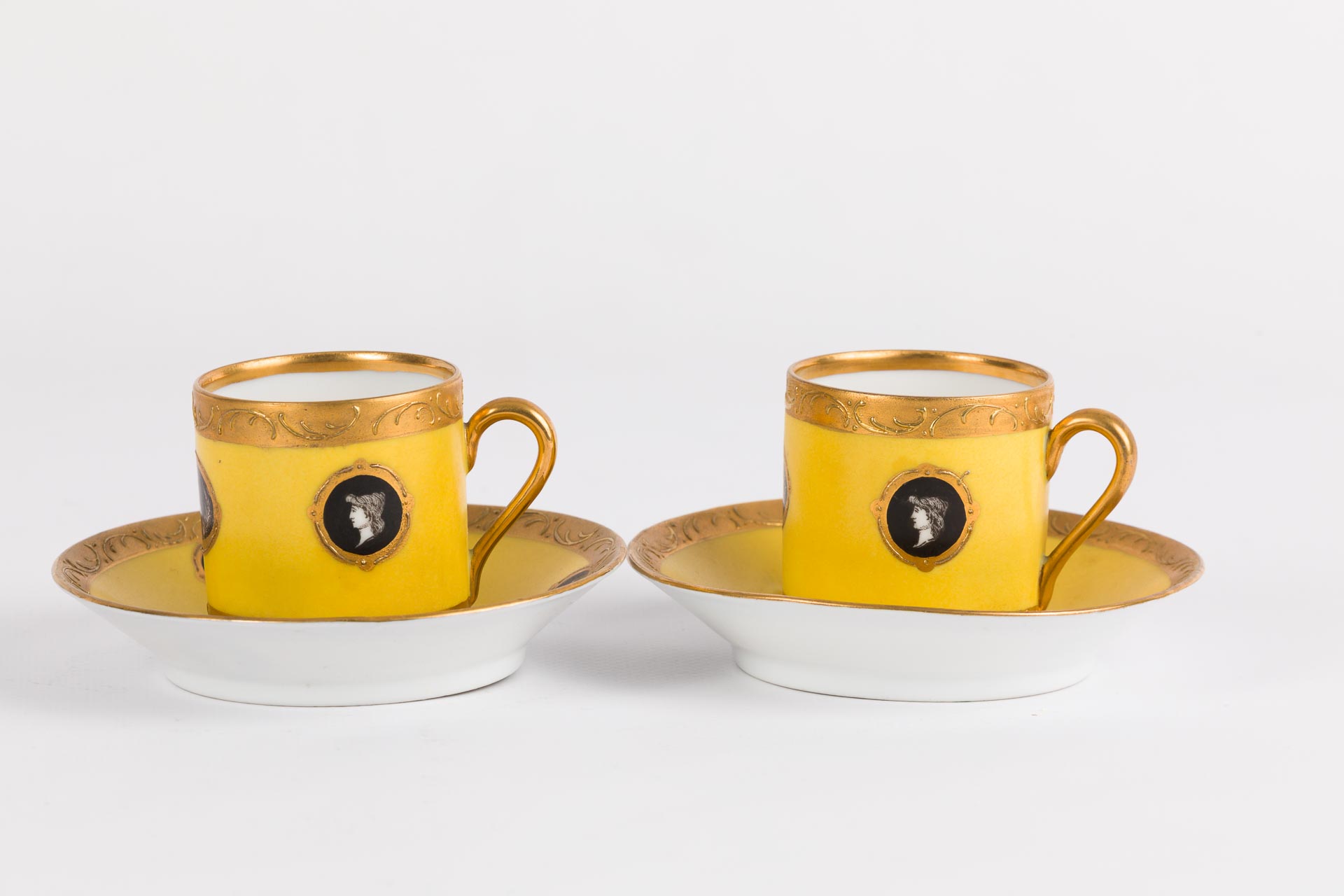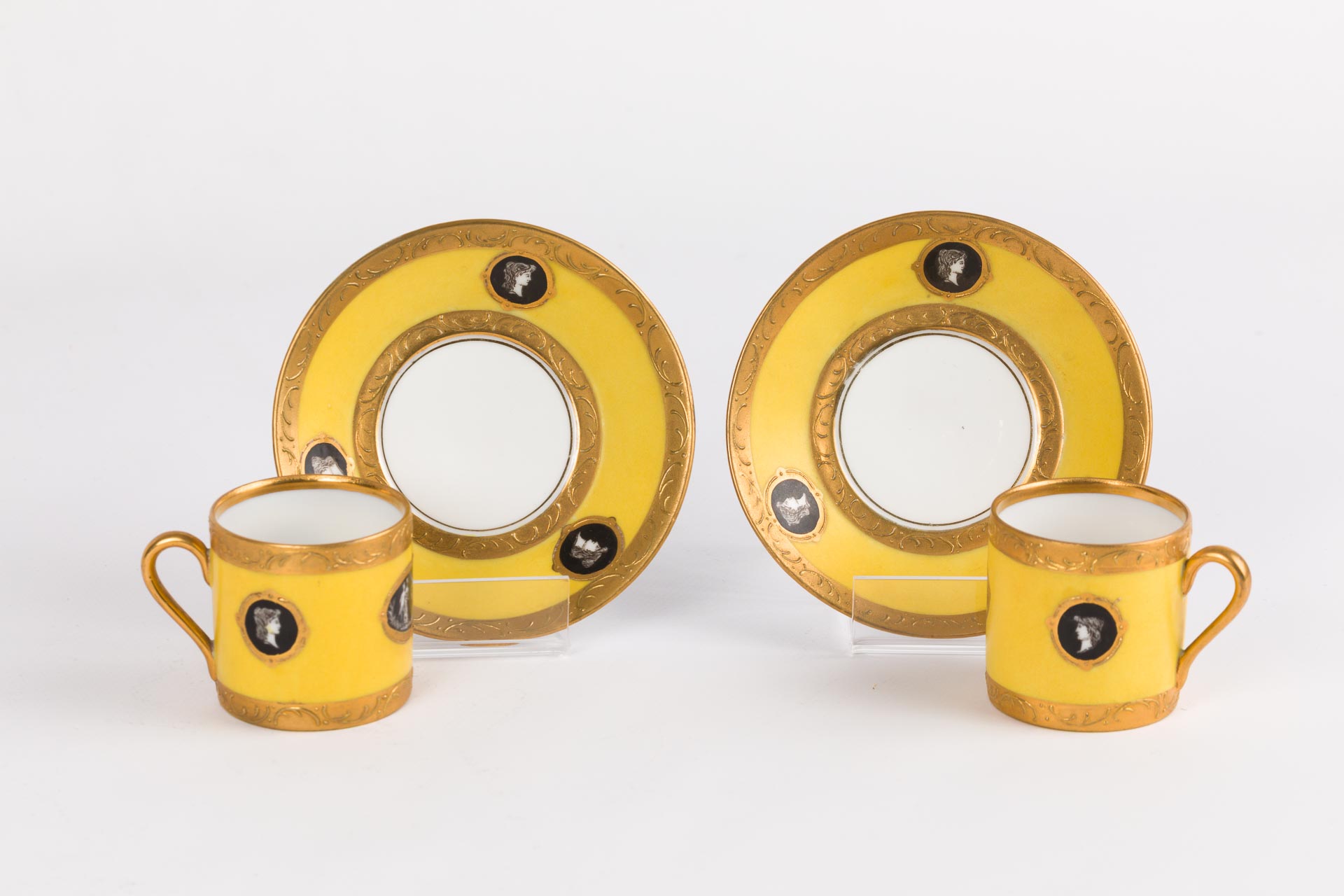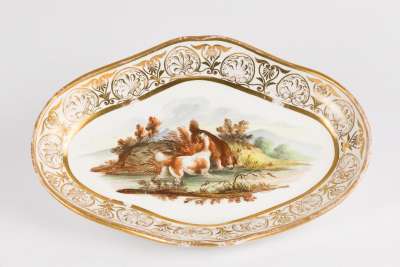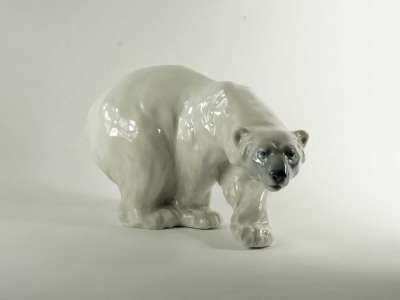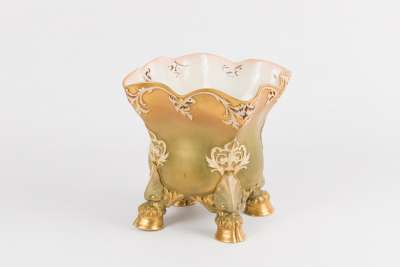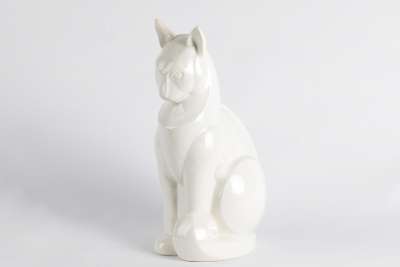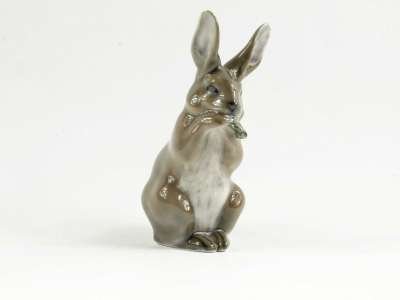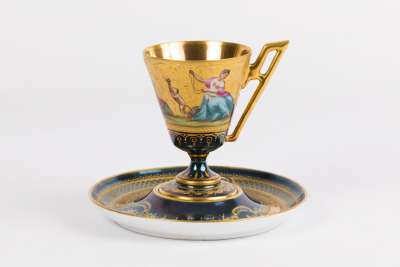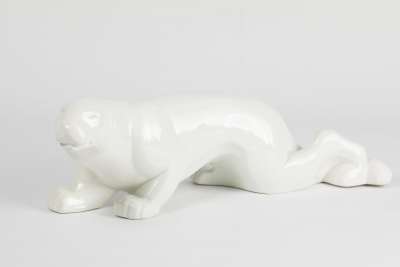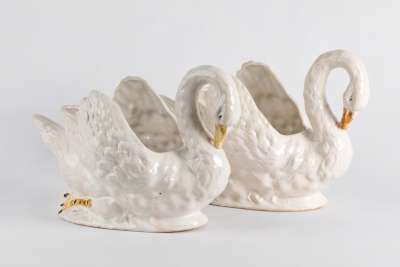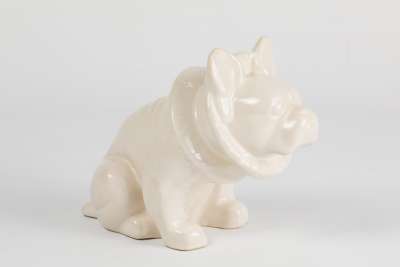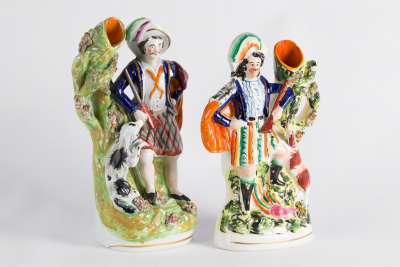This pair of French porcelain demitasse cups and saucers are distinguished by their elegant design and historical charm. Originating from France, circa 1890, these pieces feature intricate edging on the lips of both the cups and saucers. A series of cameos adorn the centre, adding to their decorative allure. The base of each piece bears a mark of an 'N' with a crown above, indicating the maker's mark. These demitasse sets represent the delicate craftsmanship typical of late 19th-century French porcelain.
Condition Report
The condition of this pair of demitasse cups and saucers is very good, with minimal signs of age and wear. The porcelain surfaces are largely intact, with no significant chips, cracks, or repairs observed. The edging and cameo designs remain clear and distinct, with only slight fading consistent with their age. Any minor imperfections do not detract from their overall visual appeal and are typical for items of this vintage. These pieces have been well-preserved, ensuring they maintain their historical and aesthetic value for collectors and enthusiasts alike.
Dimensions
Weight: 240gm (cup and saucer), Length: 11cm (saucer), 6.5cm (cup), Width: 11cm (saucer), Height: 2cm (saucer), 5cm (cup) - per one.
A Delicate Touch to Your Coffee Ritual
Originally designed to serve demitasse, these cups and saucers were intended for espresso or other strong coffees. Their compact size makes them ideal for serving small quantities of coffee, perfect for after-dinner enjoyment. The decorative cameos and elegant edging were crafted to enhance the visual pleasure of the coffee ritual, making them not only functional but also an ornamental piece for gatherings and personal use.
Exquisite Example of Late 19th-Century French Porcelain
This pair of demitasse cups and saucers exemplifies the fine porcelain craftsmanship of late 19th-century France. The pieces reflect the period's aesthetic preferences for delicate, ornate designs, showcasing cameos that were popular in decorative arts at the time. The use of porcelain and the attention to detail in the edging and cameo motifs highlight the luxurious appeal and artistic skill of the era, making them a sought-after style among antique collectors.
The Intricacies of Porcelain Craftsmanship
Crafted from high-quality porcelain, these demitasse sets were likely produced through a meticulous process involving moulding and high-temperature kiln firing. The intricate designs, including the edging and cameos, would have been applied by skilled artisans, possibly through hand-painting or transfer printing techniques. The 'N' with a crown mark on the base suggests a reputable maker, indicating a dedication to quality and artistry in their production. These methods ensured that each piece was not only functional but also a work of art.
Made by a Distinguished French Manufacturer
The 'N' with a crown mark on the base of the cups and saucers is indicative of a distinguished French porcelain manufacturer from the late 19th century. While specific attribution requires further research, such marks typically denote a high standard of craftsmanship and a commitment to producing elegant, durable porcelain. The maker's attention to detail and quality is evident in the intricate designs and the pristine condition of the pieces, underscoring their historical and collectible value.
Desired by Collectors of French Porcelain
Collecting French porcelain from the late 19th century is a pursuit driven by an appreciation for fine craftsmanship and historical significance. These demitasse cups and saucers are particularly appealing to collectors due to their intricate designs and the mark indicating a reputable maker. The well-preserved condition and the characteristic features of French porcelain from this period make them a valuable addition to any collection. Such items are cherished not only for their beauty but also for the insight they provide into the artistic trends and cultural practices of their time.

